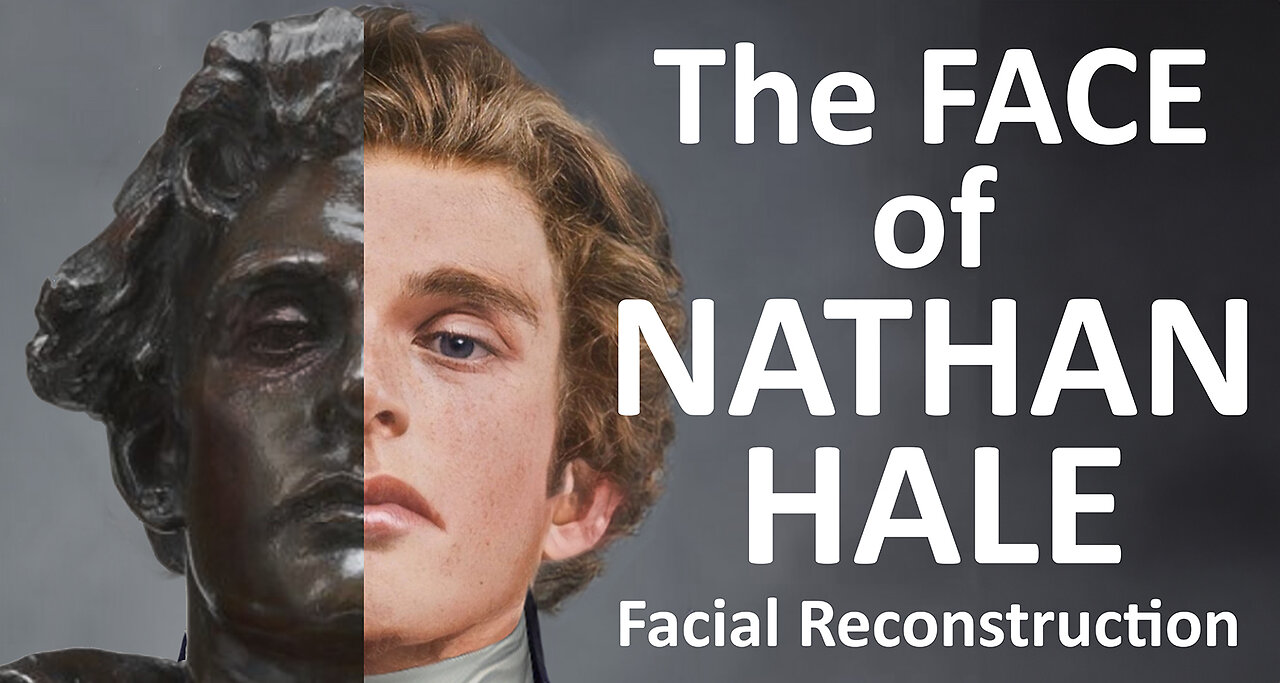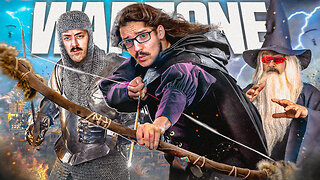Premium Only Content

The Face of Nathan Hale - Statue Facial Reconstruction - Digital Yarbs
Nathan Hale was a distinguished American Patriot, soldier, and spy for the Continental Army during the American Revolutionary War.
Born on June 6, 1755, Nathan Hale excelled academically and graduated with honors from Yale University in 1773. Soon after, in 1775, he joined a Connecticut militia unit and rapidly rose to the rank of first lieutenant within five months. He became a valued member of Knowlton's Rangers, a reconnaissance and espionage detachment established by General George Washington.
At the young age of just over twenty-one, Hale's courage and determination led him to volunteer for a perilous mission behind enemy lines before the Battle of Harlem Heights. Though lacking formal training in espionage, he succeeded in gathering vital information about British troop movements for a week.Sadly, on September 21, 1776, during his return from a mission, Hale was captured and found in possession of an incriminating document written in Latin, hidden in the sole of his shoe. Without a fair trial, General William Howe, ordered his execution for spying, which was carried out the next morning. At dawn, Hale was led to the gallows, where he faced his death with remarkable courage, supposedly uttering, "I only regret that I have but one life to lose for my country."
Nathan Hale's legacy lives on as America's first spy and a symbol of unwavering patriotism. In recognition of his selfless sacrifice and devotion, he was officially declared Connecticut's state hero on October 1, 1985.So, what did Nathan Hale look like?Regrettably, no authentic portraits or miniatures of Nathan Hale exist, and neither do any life or death masks.
Nevertheless, sculptors have crafted statues depicting their interpretation of his appearance.In 1890, sculptor Frederick William MacMonnies won a competition for a statue of Nathan Hale. The bronze was erected in Manhattan’s City Hall Park in 1893. MacMonnies had no images of Hale to consult, so he portrayed him as a quintessential American patriot. Contemporary accounts paint a picture of a remarkable individual. Beyond his intelligence and athletic prowess in wrestling, football, and broad jumping, Hale was described as kind, gentle, religious, and exceptionally good-looking. With fair skin, light blue eyes, and hair, he stood just under six feet tall, captivating both men and women alike. His presence and character earned him the admiration and affection of all who knew him, and it was said that all the girls in New Haven were enamored by him.
Nathan's voice exuded a captivating blend of "low, sweet, and musical tones." As recounted by a former student, he possessed the graceful demeanor of a seasoned academic, combined with a soft elegance.
Background Music: "I Made It Through The Rain" (Slowed & Reverb)
Special thanks to Samantha Wilcoxson, historical fiction author, for providing the image used in the facial reconstruction of Nathan Hale."But One Life: The Story of Nathan Hale" - book by Samantha Wilcoxson
https://www.amazon.com/But-One-Life-S...
Copyright ©2023
0:00 - Biography
1:32 - Nathan Hale Statue
2:06 - Physical Description
3:37 - Facial Reconstruction
3:04 - Facial Animation
3:23 - Credits
▬About Digital Yarbs ▬▬▬▬▬▬▬▬▬▬▬▬
I'm a Photoshop composition artist who enjoys history. I reconstruct life masks, statues and busts of famous early Americans and historic figures.
Using life masks, I completed a forensic/academic study of how the subjects most likely appeared using Adobe Photoshop to add flesh, hair, and other details. My website, Digital Yarbs features reconstructions and animations of these life masks along with a little history and how the subjects might have looked in daguerreotypes and photographs.
To understand what these historic figures really looked like we cannot rely on paintings as they suffer from “artistic license” and “sympathetic treatment” commonly employed by many contemporary portrait artists. Before photography, the art form of the life mask was the best way to create an exact likeness of an individual. Basically, plaster would be applied to the head and sometimes upper torso to create a mold from which a life mask or bust of the person could be cast. This would result in a three-dimensional, faithful transfer capturing in minute detail the true likeness of the subject.
Website: https://yarbs.net/
▬ More Videos ▬▬▬▬▬▬▬▬▬▬▬▬
Subscribe to Digital Yarbs: https://tinyurl.com/rrxvyx29
All Digital Yarbs videos: https://tinyurl.com/3ccrvjmm
▬ Social Media ▬▬▬▬▬▬▬▬▬▬▬▬▬▬▬
► Web: https://yarbs.net/
► Facebook: https://www.facebook.com/DigitalYarbs
► Twitter: https://twitter.com/DigitalYarbs
► Instagram: https://www.instagram.com/digitalyarbs/
► Prints Shop: https://www.etsy.com/shop/DigitalYarbs
#nathanhale #digitalyarbs
-
 LIVE
LIVE
Crypto Power Hour
1 hour agoHigh Returns From Staking Cryptocurrency
58 watching -
 41:04
41:04
Mark Kaye
1 hour agoLIVE from RUMBLE Studios at TPUSA!
2.35K3 -
 18:42
18:42
IsaacButterfield
10 hours ago $0.22 earnedVegan Activists Make People Eat Dog Meat
7735 -
 1:32:02
1:32:02
The Quartering
2 hours agoKarmelo Anthony SCREWING UP, Shorts Are Destroying Us, Huge Win For Men & More!
112K18 -
 LIVE
LIVE
RalliedLIVE
1 hour agoSHOTTY BOYS VS THE WORLD - TRIPLE THREAT CHALLENGE
81 watching -
 1:40:30
1:40:30
Tucker Carlson
4 hours agoGeorge Santos Airs All of Congress’ Dirty Laundry in Final Interview Before Prison
61.4K38 -
 1:06:49
1:06:49
Sean Unpaved
2 hours agoThe Biggest Coaching Misfires & Priceless Paws
15.5K -
 49:24
49:24
Alexis Wilkins
2 hours agoBETWEEN THE HEADLINES: WE’RE SO BACK
26.8K4 -
 2:04:12
2:04:12
Tim Pool
4 hours agoThe WOKE TAKEOVER of Psychology & Medicine | The Culture War with Tim Pool
208K113 -
 1:58:41
1:58:41
The Charlie Kirk Show
3 hours agoLive from the Student Action Summit | Bannon, Clark, Rosas | 7.11.25
50K21